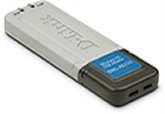By default redhat enterprise linux comes with SSH (secure shell) enabled with telnet disabled.telnet is not secure anymore but people still prefers telnet due to it's simple nature. 1. Please make sure to check if you have telnet server installed on your server:
[root@pluto~]#rpm -qa grep telnet
telnet-0.17-31.EL4.3
telnet-server-0.17-31.EL4.3
2.If you do not have the telnet-server or telnet packages installed, you can install from the RPMs available from your installation media or you can use the up2date utility along ith your RHN subscription to download and install the packages :
[root@pluto~]# up2date telnet-server telnet
3.To install telnet server use :
[root@pluto~]# rpm -ivh telnet-server-0.17-31.EL4.3.rpm
4. After installing telnet make sure to activate telnet services in /etc/xinetd.d/telnet file and Change disable yes to no :
# default: on
# description: The telnet server serves telnet sessions; it uses \
# unencrypted username/password pairs for authentication.
service telnet
{
flags = REUSE
socket_type = stream
wait = no
user = root
server = /usr/sbin/in.telnetd
log_on_failure += USERID
disable = no
}
5.
Now we have to enable Telnet server using the chkconfig command so when server reboots everytime we don't have to start the service manually .You must be root in order to use these commands.
[root@pluto~]#chkconfig --list telnet
telnet off [root@pluto~]#chkconfig --level 123456 telnet on
[root@pluto~]# chkconfig --list telnet
telnet on
6.Finally we need to turn on the service using xinted
[root@pluto~]# service xinetd restart
Starting xinetd: [ OK ]
Here you go telnet is now enabled:
[root@pluto ~]# telnet localhost
Trying 127.0.0.1...
Connected to localhost.localdomain (127.0.0.1).
Escape character is '^]'.
Red Hat Enterprise Linux AS release 4 (Nahant Update 2)
Kernel 2.6.9-22.0.1.EL.rootsmp on an i686
login: hello
Password:








